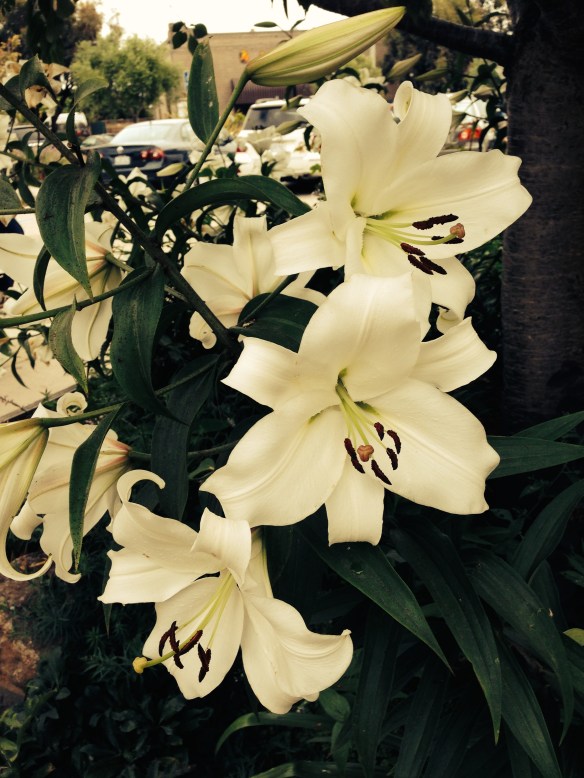Ivy brings a combination of pleasure and pain to the garden, and the potential to surprise gardeners who do not pay attention
Forty years ago, when I moved to my current residence, the property had a generous crop of English Ivy (Hedera helix). This most common species of the genus Hedera has some appeal in the garden. The Royal Horticultural Society has honored fourteen cultivars of H. helix with its Award of Garden Merit, reflecting the plant’s apparent good behavior in England’s climate.
Despite its British credentials, H. helix grows rampantly on the west coast of the United States. Washington and Oregon have listed it as a noxious weed. California’s Department of Food and Agriculture has not yet listed this plant as a noxious weed, but hopefully is considering that action.
This plant had covered much of my new garden, grown into some shrubs, and overwhelmed a large evergreen tree. We removed the tree, with great regret. After several months of hacking at this invasive plant and uncounted ivy hauls to the local landfill, we had it under control. During the following years, we pulled many sprouts and still do today. The more recent sprouts probably began with bird visits, but it is not impossible that dormant ivy seeds have been lurking in my garden for decades, awaiting a taste of moisture and sunlight.
More recently, perhaps five years ago, a variegated cultivar of Algerian Ivy (H. algeriensis) caught my eye, and I planted a small amount near the base of a chimney as a groundcover. All ivies grow horizontally, and are often selected for groundcover duty. My willingness to give this plant another chance in my garden reflects both short memory and persistent optimism.
In the same area, and with similar optimism, I installed a Big Mexican Scarlet Sage (Salvia gesneriiflora). This plant quickly grew well above ten feet in height (it can reach twenty feet high in the mountains of northeastern Mexico) and spread to four separate shrubs.
These beautiful but huge plants concealed the ivy’s relentless spread. The Algerian Ivy/Big Mexican Scarlet Sage collusion continued for weeks, until the enormous salvia finished blooming, and became ready for renewal pruning (i.e., cutting it to the ground).
That drastic action revealed that the ivy had discovered the chimney that rises about thirty feet beside the house, and used it aerial roots to grow to the top of the chimney and spread in both directions across the side of the house. This growth had not been impossible to observe, but the tall shrubs close to the pathway effectively screened the situation from view.
There’s a certain charm to ivy-covered walls, but the plant eventually can cause damage and rot, and harbor unwelcome wildlife. My best choice was to have the ivy pulled down, expecting that it would take down some of the thin-brick veneer, which it did.

The next steps of this project include reattaching the missing pieces of the veneer, removing the ivy and all but one specimen of the Big Mexican Scarlet Sage, and keeping it pruned to appropriate size.
Then, the project includes shopping for plants to re-landscape the area. The UCSC Arboretum’s Fall Plant Sale will be a fine opportunity to acquire California native plants for this project. The sale begins at 10:00 a.m. tomorrow (Saturday, October 13th).
Lesson learned: if you plant any variety of ivy in your garden, check occasionally to make sure that it is growing only where you want it to grow.











